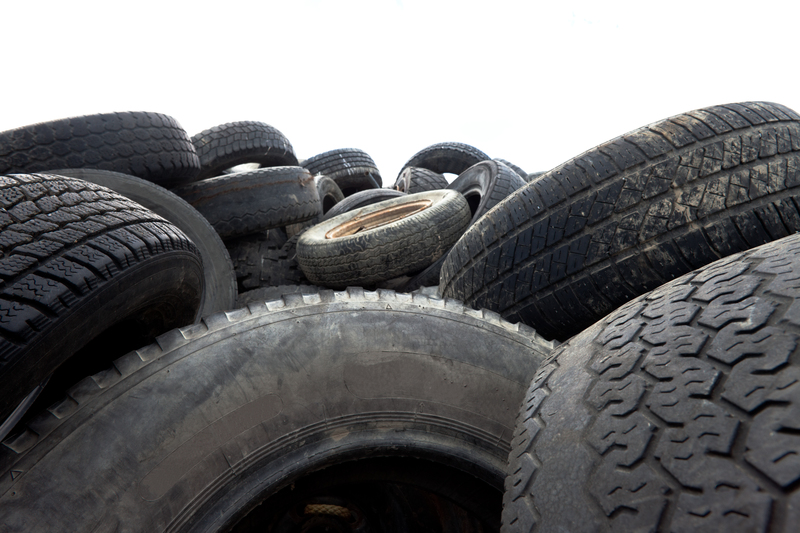Comprehensive Guidelines for Proper PPE Waste Collection and Disposal
The global surge in the use of personal protective equipment (PPE), especially during health crises, has created a pressing need for effective PPE waste collection and disposal. PPE waste includes items like masks, gloves, gowns, and face shields, posing unique management challenges due to potential contamination. *Improper disposal* risks environmental pollution and contributes to the spread of infectious diseases. Therefore, understanding and implementing proper PPE waste disposal practices is crucial for safeguarding public health and the environment.

Understanding PPE Waste: Types and Challenges
PPE waste refers to all disposable personal protective equipment used in healthcare, industrial, and even everyday public settings. These items protect the wearer but, once used, can become hazardous if not handled correctly. PPE waste management brings specific challenges due to the materials involved and the potential presence of infectious agents.
Common Types of PPE Waste
- Masks and Respirators (surgical, N95, cloth masks)
- Disposable Gloves (latex, nitrile, vinyl)
- Protective Gowns and Aprons (single-use, non-woven)
- Face Shields and Goggles
- Shoe Covers, Head Covers, and Other Accessories
Each item may contain bodily fluids, chemicals, or other contaminants, making PPE waste collection and safe disposal vital.
The Importance of Proper PPE Waste Management
Improper handling of PPE waste can result in serious health hazards and long-lasting environmental harm. Here's why effective PPE waste disposal matters:
- Prevents Disease Transmission: Used PPE can be contaminated with dangerous pathogens. Proper collection and disposal reduce the risk of secondary infection.
- Protects Waste Handlers and the Public: Safe PPE waste handling ensures the safety of cleaning staff, sanitation workers, and the wider community.
- Minimizes Environmental Impact: Reduces plastic pollution and prevents contaminants from leaching into soil and waterways.
Legal and Regulatory Requirements
Most countries have strict regulations regarding medical and infectious waste management. Failure to comply can result in significant legal penalties, damage to reputation, and increased liability. Organizations must stay updated on local, regional, and international standards for PPE waste disposal.
Step-by-Step Procedures for PPE Waste Collection and Disposal
To ensure safe and eco-friendly disposal of used PPE, organizations and individuals should follow a structured approach. Here's a comprehensive set of guidelines for PPE waste collection and disposal:
1. Segregation of PPE Waste at Source
- Immediate Segregation: Used PPE items must be separated from regular waste as soon as they are removed.
- Use of Dedicated Bins: Place designated, clearly labelled bins (preferably touch-free pedal bins) for PPE waste in strategic locations.
- Identification: Use color-coding (e.g., yellow or red bags) and labels to differentiate PPE waste from standard trash.
2. Safe Collection and Handling Procedures
- Wear Fresh PPE: Anyone handling PPE waste should use fresh gloves and face masks to prevent cross-contamination.
- Avoid Direct Contact: Use tools (tongs, grabbers) rather than bare hands to manage visible waste.
- Maintain Hygiene: Sanitize bins and areas frequently, and ensure hands are washed after handling.
3. Secure Packaging of Collected PPE Waste
- Leak-Proof Bags: All collected PPE should be placed in strong, puncture-resistant, leakproof bags or containers.
- Double-Bagging: For potentially contaminated items, use double-bagging to reduce spillage risk.
- Seal and Mark: Bags should be tightly sealed and clearly labeled before transportation for proper identification.
4. Temporary Storage of PPE Waste
- Designated Storage Areas: Set aside secure, well-ventilated, and isolated spaces for temporary storage before disposal.
- Time Limit: Do not store collected PPE waste for longer than required; typically, it should not exceed 24-48 hours.
- Access Control: Restrict access to authorized personnel only to minimize risk.
5. Organized Transport to Treatment Facility
- Licensed Personnel: PPE waste should only be transported by authorized waste handlers.
- Use Disinfected Vehicles: Vehicles used for PPE waste transportation should be disinfected before and after each use.
- Documentation: Maintain a log of waste generation, transport, and disposal for regulatory compliance.
6. Final Disposal: Treatment and Environmentally-Safe Methods
- Incineration: High-temperature incineration destroys hazardous agents and reduces waste to minimal, non-infectious ash.
- Autoclaving: Steam-based sterilization is suitable for some types of PPE waste, making them safe for landfill disposal.
- Landfilling: Use controlled sanitary landfills for non-infectious, treated PPE waste only.
- Consult Local Guidelines: Always refer to local regulations to decide the most appropriate and legal disposal method.
Household PPE Waste Disposal: Everyday Best Practices
With the general public increasingly using masks and gloves, domestic PPE waste management is now a concern. Here are simple yet effective practices for households:
- Do not throw used masks or gloves in regular recycling bins; they are not recyclable and can endanger sanitation workers.
- Place PPE items in a plastic bag, tie it securely, and dispose of it with general waste.
- Wash hands thoroughly after handling used PPE.
- Encourage children and elderly family members to follow proper PPE waste disposal routines.
*Special note*: If a household member is suspected or confirmed to be infected, double-bag PPE waste and notify local authorities for instructions on safe disposal.
Reducing Environmental Impact: Sustainable PPE Waste Alternatives
While proper PPE waste disposal is essential, minimizing the creation of such waste is equally important. Here's how organizations and individuals can reduce their environmental footprint:
- Use Reusable PPE: Where safe and possible, switch to washable masks and gowns to minimize single-use waste production.
- Promote Recycling and Recovery: Research innovative programs offering PPE waste recycling, especially for plastic-based protective gear.
- Educate and Train: Regularly conduct awareness campaigns and training sessions on responsible PPE use and waste disposal protocols.
- Support Regulatory Initiatives: Participate in local and global initiatives prioritizing sustainable PPE and waste management.
Workplace Compliance: Training and Accountability
Establishing a robust PPE waste management policy is crucial for any organization. The policy should include:
- Clear Standard Operating Procedures (SOPs) for collection, segregation, and disposal
- Regular Training for all staff, including cleaning personnel and waste handlers
- Availability of Necessary Resources such as PPE disposal bins, labels, and disinfectants
- Proper Supervision and Monitoring to ensure guidelines are followed
- Incident Reporting Mechanisms for accidental exposure or spillage
A dedicated PPE waste management supervisor can oversee daily operations, compliance, and continuous improvement of procedures to maximize safety.

Innovations and Future Trends in PPE Waste Management
The growing challenge of PPE disposal has sparked global innovation. Some promising developments include:
- PPE Recycling Initiatives: Companies are developing processes to recover plastic from used masks and gloves for manufacturing new products.
- Biodegradable PPE: Researchers are working on alternatives made from plant-based or compostable materials to reduce landfill burden.
- Smart Disposal Bins: Touchless bins equipped with sensors and tracking deliver safer, more hygienic waste collection in public spaces.
- Blockchain Waste Tracking: Some organizations use blockchain for transparent recording of PPE waste from generation to final disposal, improving compliance and safety.
Investing in these technologies can help organizations stay compliant and position themselves as leaders in environmental stewardship and occupational health.
Conclusion: Safeguarding Health and the Environment
The safe and responsible collection and disposal of PPE waste is a critical component of infection control and environmental sustainability. By following the above guidelines for PPE waste management, individuals and organizations can play their part in protecting staff, public health, and the planet. *Stay updated on regulatory changes*, *adopt new technological solutions*, and *educate all stakeholders* to ensure long-term safety and compliance.
Quick Checklist for Proper PPE Waste Disposal:
- Segregate used PPE immediately
- Utilize labeled, leak-proof bins and bags
- Wear protective gear when handling waste
- Ensure secure, timely storage and transport
- Select legally approved disposal methods
- Keep thorough records and monitor compliance
- Regularly review procedures and train staff
By following these PPE waste collection and disposal guidelines, communities can prevent infection, reduce pollution, and promote a safer, healthier world for all.